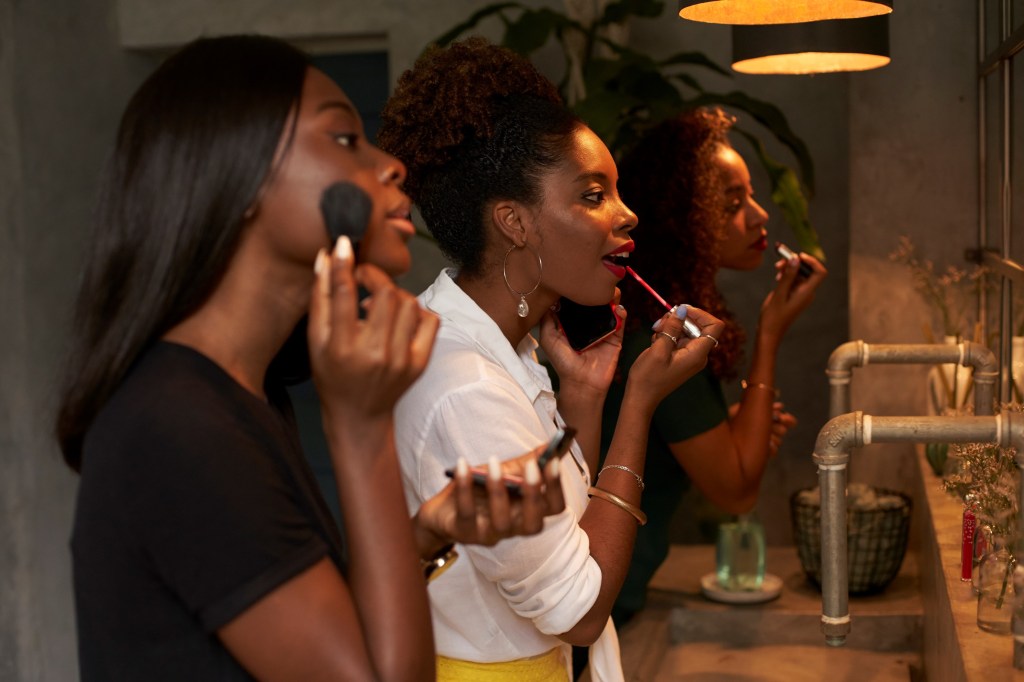There’s no shortage of burgeoning technology to help consumers simplify their lives, do more in less time and have a little more fun in their days, but there’s no guarantee that any of it will drive greater consumer loyalty or sales.
If brands want to win the technology race, they need to focus on using technology as an enabler of humanity and use it to build trust and connection in this world. That’s because trust is at the epicenter of the decisions that women—and all consumers—make.
Trust is at the epicenter of the decisions that women — and all consumers — make.
The good news is most women around the world, 72%, say they have better access to technology than they did just two years ago, but that doesn’t necessarily mean they trust it. When it comes to trying, purchasing, and adopting, women are discerning consumers. Specifically, they don’t believe product claims simply because they’re pasted on a package. They need to validate the claims themselves or from other people they trust. And that means myriad other brands can step in and capitalize on the opportunity—as long as they gain her trust.
NielsenIQ’s research shows that augmented and virtual reality (A/VR) will drive the next big shift in how consumers shop, particularly where 5G rolls out. Around the globe, half of consumers say they’d be willing to use A/VR technology to assess new products and services, but women are more hesitant than men.
Where consumer interest is the highest, in Latin America and Asia-Pacific, men and women equally embrace the technology. But if we look at Europe and North America, the regions where the technology may benefit from a quick and broad roll out of 5G, we see women are driving this rejection. This showcases that even if technology is available, it doesn’t mean women will adopt it.
Brands that use A/VR to build trust with women through increased transparency, create stronger connections and enable risk-free shopping will win. There are a myriad of ways AR technology can create informative, personal, and compelling brand experiences for consumers. But that potential dies if they don’t have the ability to deliver it. And as we can see in markets where this technology is maturing, acceptance, especially among women, is definitely not a given.
To win on that front, brands and retailers need to ensure that they’re showcasing elements, features, and offerings that are important to women. We know what women are looking for, and that gives brands clear insight into how to develop technologies that meet their needs—and earn their trust in the process.
But augmented experiences won’t be limited to how consumers assess products away from brick-and-mortar environments. They will be just as useful in physical stores. Think about how much more engaging a purchasing experience will be when you add AR. Take buying a new outfit, for example, or running shoes—or even something like a car or furniture. While those are clearly bigger-ticket examples, brands and retailers will be able to—and should—apply the same thinking to everyday purchases as well.
Consumers lead fast-paced lives, and they’re looking to brands and retailers for help in simplifying and getting it all done. Women are at the top of the “I’m too busy” pyramid, and they’re looking for convenience and speed to get back something they value more than anything else: time. But A/VR stands to offer more than just convenience and speed. This technology will offer women the “touch and feel” certainty that they crave, which will be a meaningful way for brands to build personal relationships with women. A brand or retail experience that puts a product in women’s hands (to discover its benefits and inspect its quality) will be one that builds brand trust with women consumers.
A brand or retail experience that puts a product in women’s hands (to discover its benefits and inspect its quality) will be one that builds brand trust with women consumers.
Here’s a suggestion: Offer navigational apps to help women find healthy meals or box lunch options. The same type of technology could be used to map a route to personalized promotions or to list out the items needed for dinner that night. Sound like something in the distant future? It shouldn’t, as 43% of women globally say they’d be willing to use in-store navigation tech.
Globally, women in developing regions within Latin America, Asia-Pacific, and AME (Africa / Middle East) are driving more willingness toward in-store navigation than elsewhere. Comparatively, women in North America and Europe are less open to this type of technology, highlighting both an opportunity and challenge for brands and retailers. The technology is here. Brands and retailers just need to showcase how it can help simplify women’s lives throughout their weekly routines.
We know that women are the key decision makers when it comes to daily shopping, and navigational technology could transform the conventional shopping journey—helping women determine which brands will enter their homes. This type of tech will also help shoppers save time and money, both of which are foundational in establishing trust with them.
But we don’t have to wait for technology to help our shopping experiences. Virtual assistants are quickly becoming the norm, for example, yet more than half of North American women are reluctant to try them. Why? Trust. It’s one thing to ask it the weather or to play your favorite song, but consumers are wondering “How can you trust a device that is always listening to you?” Can it really order the right kind of yogurt for you? There’s also trust involved with giving a device an inside look at your purchase history, credit card information, and other personal information.
Importantly, consumers—both men and women—do trust organizations with their personal data. Whether it be on social media, making a purchase via e-commerce site, or making an online music playlist, we’re all providing brands with an array of data about ourselves. While consumers may view sharing personal data with digital-first companies different from traditional retailers, the behavior is evidence of an openness when there’s a perceived value.
Brands need to build trust with women, and that means proving that they understand women’s needs and desires. Trust will also be built via transparency—in the way our companies work, how we treat our people, how we source our products, the suppliers we work with; the advertising we use to communicate our messages and how we treat and value their personal data that they bestow on us as custodians.
As technology advances, it has the potential to erode trust and create fissures between brands, people, and even governments. Those that understand how to use technology to develop trust rather than create a reason to doubt trust will win with all consumers, but especially women, who will weigh more facets of their life against this value.



